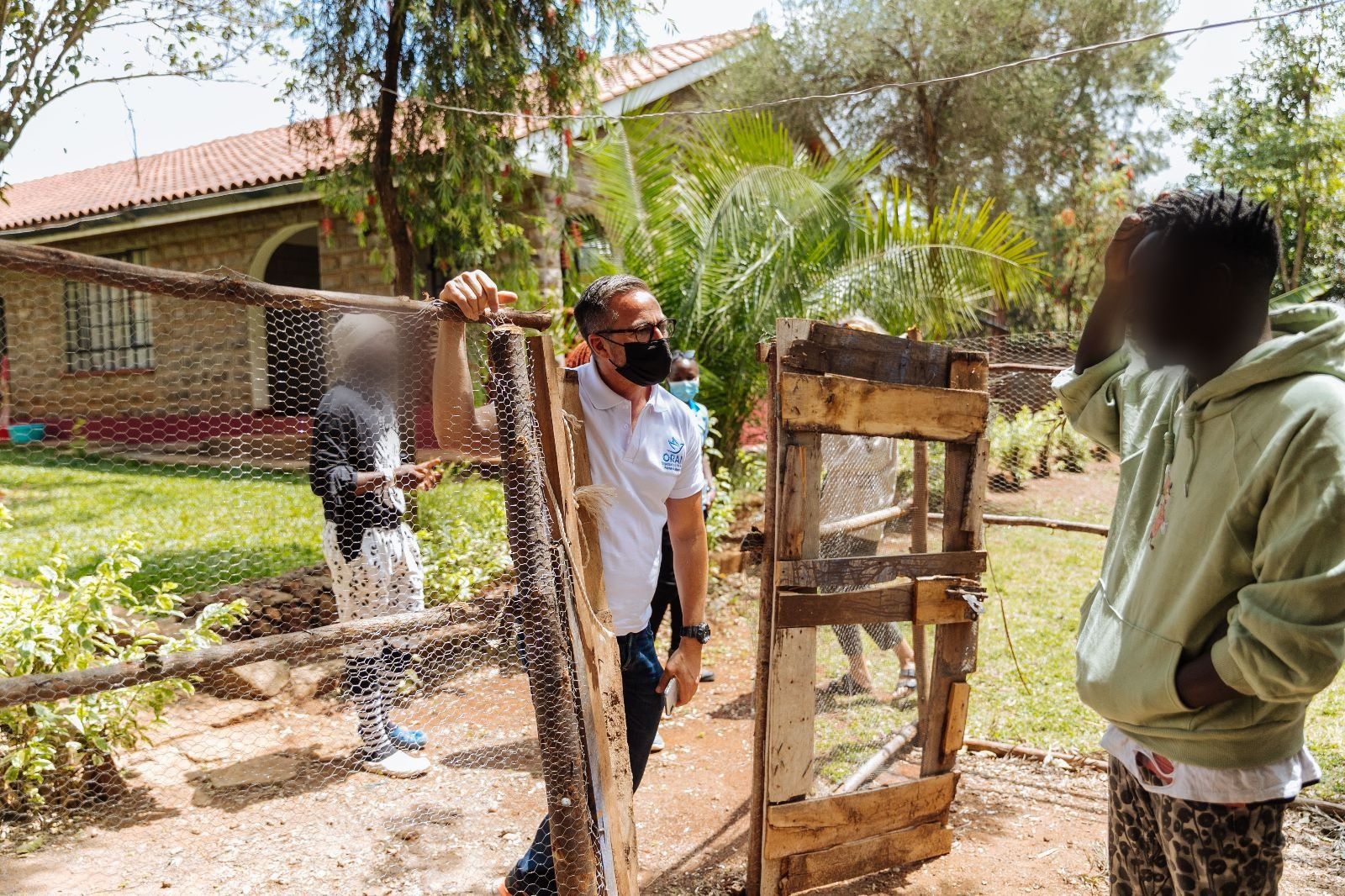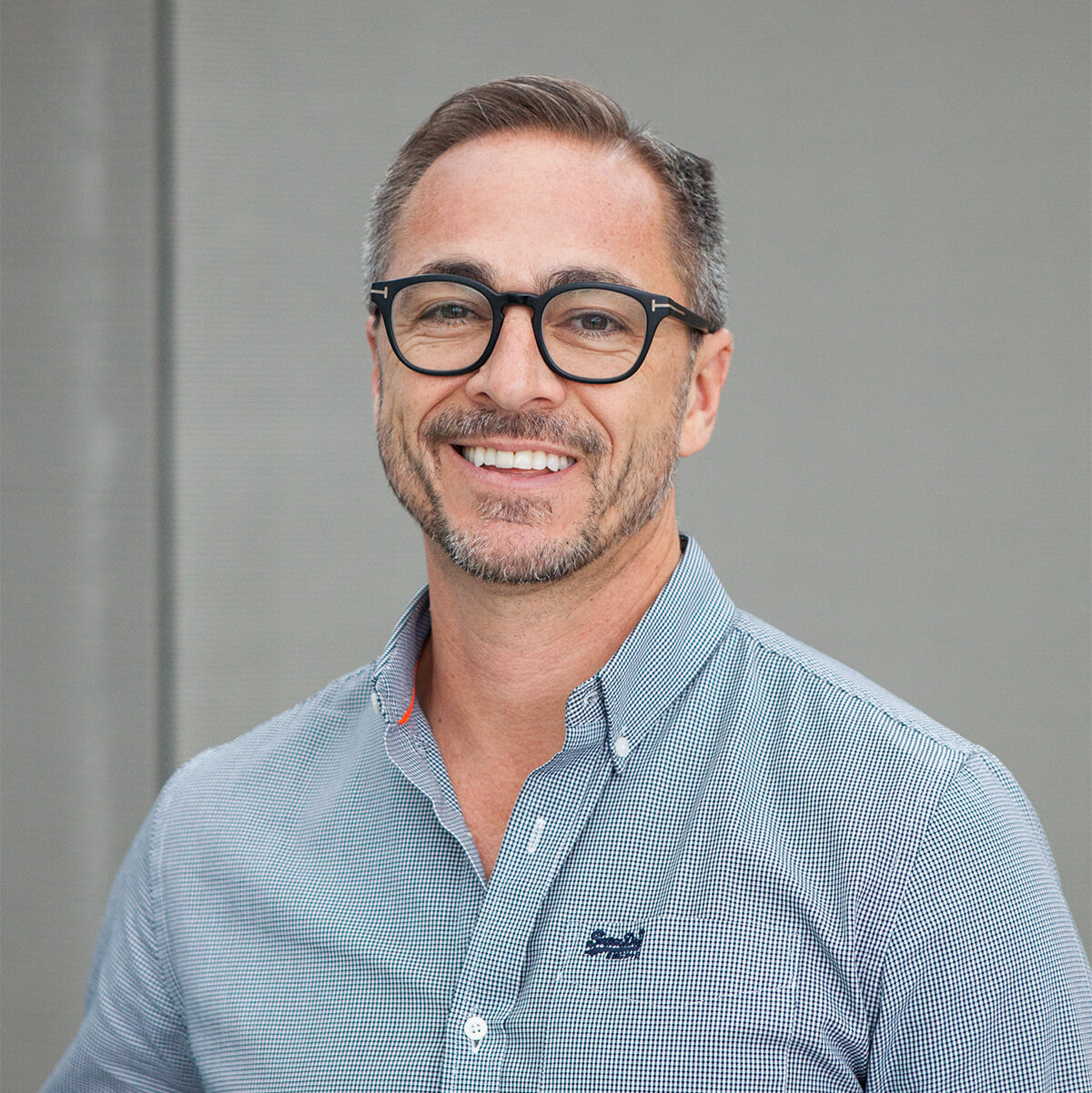June is a month for Pride and refugee awareness: Q&A with ORAM’s CEO

June is LGBTQ+ Pride Month and June 20 is World Refugee Day. In recognition of these observances, I decided to catch up with Steve Roth, executive director of CDP’s grantee partner, ORAM, an international organization working at the intersection of these two movements.
We want to shine some light on the issues that people who are LGBTQ+ and refugees face and how the intersectionality of these two characteristics often results in inequitable treatment during disasters and crises.
June also features World Day to Combat Desertification and Drought on the 17th. CDP has been partnering with ORAM in Kenya to support LGBTQ+ refugees disproportionately impacted by the country’s worst drought in decades and the resulting hunger crisis.
Alex Gray: Let’s start by telling me a little bit about ORAM and the work you do.
Steve Roth: Sure, ORAM was founded in 2008 and is one of the first international nongovernmental organizations (INGOs) that assists people fleeing crisis and persecution based on their sexual orientation and/or gender identity.
We support and empower vulnerable LGBTQ+ refugees and asylum seekers globally, helping them rebuild their lives with a focus on sustainability. We work primarily in transit countries in Africa, Europe and Latin America, and some of our key programmatic areas include economic empowerment, housing and civil society strengthening.
AG: What would you like readers and funders to know about the unique challenges LGBTQ+ refugees and asylum seekers face, and can you also say a little about the impact of their intersecting identities?
SR: First, let’s start with the fact that same-sex relations are still criminalized in nearly 70 countries worldwide, and LGBTQ+ people face discrimination, harassment and persecution even in places where their sexual orientation and identities are not criminalized. So, they are already a vulnerable and marginalized group. Most refugees and asylum seekers flee conflict and crises with their families and communities, who are their main physical, economic and emotional support. Queer refugees are often outcast or rejected by their families or community, so they often travel alone without this critical support to rely on for protection and survival.
LGBTQ+ refugees face discrimination along multiple identity lines. As refugees, they are often marginalized based on the language they speak and their nationality or country of origin. Then they are further discriminated against because of their sexual orientation and gender identity and expression.
This makes it even harder for them to find a safe and welcoming place to live and to gain equitable access to healthcare, shelter, and job opportunities. These compounding vulnerabilities put them at higher risk. They are more likely to have only themselves to rely on or their fellow LGBTQ+ refugee community, which affects their ability to meet their most basic needs and results in greater mental health issues compared to other crisis-affected populations. This highlights how the intersectionality of identities can compound vulnerabilities and result in even greater inequity in treatment in humanitarian response and recovery efforts.
AG: How does ORAM help them overcome those obstacles? How do you approach your work and decide on priorities?
SR: Before starting any programs, we speak with community members to determine what they want and need. Based on needs assessments and discussions with the people we serve, we will, together with the community, develop programs to fill the gaps in service provision and support.
What these programs look like will depend on the region and country context. Working with LGBTQ+ refugees in these countries, we aim to support and strengthen their existing capacities to live a more dignified life, whether that means helping them access their basic rights, safe shelter, economic empowerment or training and support to meet basic needs.
AG: The average length of time a refugee is displaced varies from year to year, but by most estimates, it’s around 18-20 years. How does this affect how you approach your work? This is particularly of interest to CDP, given our primary focus on recovery and resilience rather than relief. And we know there is never enough funding for protracted crises or recovery, as the funding dries up when the media headlines have moved on.
SR: Because most refugees do not plan to stay in transit countries, they initially rely on humanitarian assistance. However, this is unsustainable, denying them agency in their lives and negatively affecting their mental health.
At ORAM, however, we believe that recovery can start anytime, so we focus on sustainable solutions in transit countries through economic empowerment and livelihood programs that enable LGBTQ+ refugees to generate income and support themselves and the community. We provide them with the tools they need to be self-sufficient and resilient.
LGBTQ+ refugees are also not immune to the impacts of climate change and other global forces. Much of our livelihoods work in Kenya is funded by the Center for Disaster Philanthropy to address the hunger crisis caused in part by drought in East Africa.
AG: As you know from our work together, at CDP, we prioritize both medium- and long-term recovery as well as localization, supporting local organizations and local leadership. How do these elements show up in ORAM’s approach, and why is this important for LGBTQ+ refugees?
SR: As a small international organization, ORAM has always worked closely with the community we serve. At ORAM, we understand that LGBTQ+ refugees themselves are best positioned to not only understand their needs but also understand the support needed to live safer and more dignified, meaningful lives.
In many places, like Kenya, the communities have organized themselves in community-based organizations (CBOs) that strive to support the community at large. However, these CBOs do not always have the technical or organizational skills – or resources – to become sustainable organizations able to work long-term on serving LGBTQ+ refugees.
Therefore, ORAM partners with such organizations, strengthening leadership, management, financial literacy, grant writing, fundraising, networking, outreach, partnership building, project development and implementation, and the like. Through this, we strive to enable the community themselves to be the first responders on the ground in times of disaster or crises and empower them to find the solutions to recover, thrive and live up to their full potential.
AG: More than eight million Ukrainians have fled their country since Russia’s invasion, including many LGBTQ+ refugees. What is ORAM seeing as the ongoing needs, and what do you plan to do about it?
SR: We estimate that there are roughly 800,000 displaced LGBTQ+ Ukrainians across the E.U. Many organizations responding to the refugee crisis do so without targeted and inclusive programs for LGBTQ+ displaced people.
More than one year in, we still see housing, employment, access to specific health care and psychosocial support as critical needs. Beyond that, and through the generous support of CDP, we will be researching and documenting both the needs of LGBTQ+ Ukrainians in the E.U. and where the humanitarian system is failing to adequately meet those needs. From this, we will have a far-reaching capacity strengthening plan for national and international civil society actors so that their responses can be more inclusive of LGBTQ+ refugees’ unique needs.
AG: The new U.S. asylum ban is putting even more pressure on asylum seekers, including LGBTQ+ people, who are fleeing disasters and crises and trying to reach safety. I just returned from Mexico, where I met with LGBTQ+ refugee serving organizations and heard first-hand about the many disasters and crises they are fleeing from, some seeking asylum in Mexico and some trying to reach the U.S. because they are considered safer refugee hosting countries for LGBTQ+ people. What would you like our readers in the U.S. to know about refugee populations coming to claim asylum? The human story is often missing in the news cycles in the U.S.
Mexico has become a hub for people fleeing insecurities, conflict and persecution worldwide, including LGBTQ+ individuals. Many are hoping just to pass through and reach the U.S., whereas others are increasingly opting to stay in Mexico and trying to build a life there, despite the challenges that come with this.
Mexico is in some respects transforming from a country that LGBTQ+ individuals fled to the U.S. from to a destination country for others globally. This is partially due to the U.S. asylum ban, which was in place for over three years and continues in other ways now, but also partly owing to the milestones Mexico has reached regarding the protection of human rights. Places like Mexico City, while not perfect, can provide a safe haven for LGBTQ+ refugees and others fleeing from the region.
Thousands risk their lives daily trying to make it to safety, and especially vulnerable individuals, such as the LGBTQ+ community, are at severe risk of human trafficking, gender-based violence and other life-threatening hazards. Currently, thousands are in extreme danger waiting at the US-Mexico border because of a lack of clear information enabling them to make safe and sound decisions about their lives. Moving forward, the U.S. needs to work closely with Mexico to allow safe passage for those who need to seek protection in the U.S., but at the same time, strengthen and support Mexico to become a safe haven for those that want to stay.
AG: We know that the international humanitarian system largely fails LGBTQ+ populations, and they are absent from humanitarian response plans. Why do you think that is, and what can be done to make sure the unique needs of LGBTQ+ refugees are met?
SR: Sadly, many INGOs espouse the need for inclusive humanitarian response plans but often fall short of delivering on the promise. Factors ranging from staff turnover to a shortfall in dedicated resources to a lack of detailed understanding of the unique needs of this community and how to address them contribute to this failure.
Humanitarian organizations must genuinely commit to serving this marginalized and overlooked community and bring in experts to help them understand the unique needs of LGBTQ+ refugees and how to meet those needs. This can be done through participatory training sessions, one-on-one mentorship and knowledge-sharing sessions.
ORAM’s core mandate is to serve LGBTQ+ refugees and asylum seekers, and we’ve been providing training and capacity-building to various stakeholders in the humanitarian field for nearly 15 years. We’re thrilled that CDP is supporting us to do this work going forward with humanitarian organizations in Central and Eastern Europe and Kenya.
AG: What message do you have for other funders who may not know much about this population: where can they get more information, and what advice do you have for them?
SR: We invite other organizations to contact us at ORAM or check out our website.
My parting advice for other funders who may not know much about this population and may feel unsure about where to start is to jump in and get engaged. As we said, Pride Month and World Refugee Day make this the perfect time to get started. If you’ve been thinking about supporting an organization working with vulnerable populations like LGBTQ+ refugees, doing it during a month like this would show solidarity with their work and the movement. Now’s the time!

